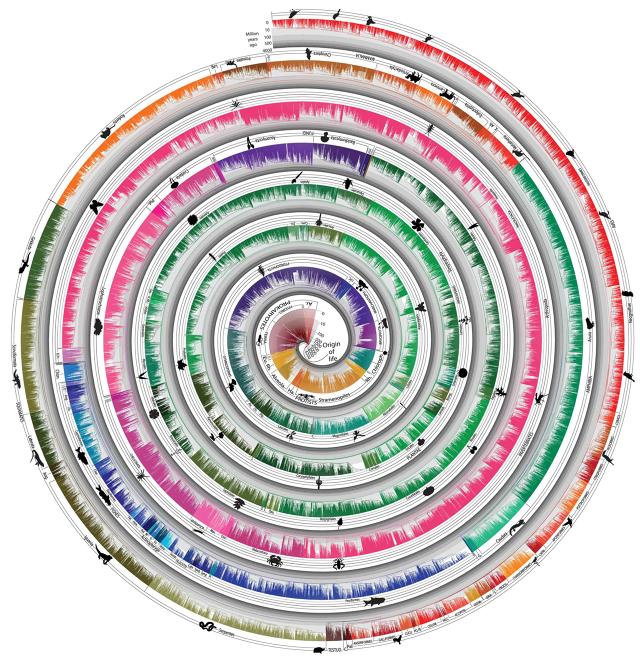World’s biggest Tree Of lifestyles Visualizes 50,000 Species across Time
The circle of existence meets domestic tree.
March eleven, 2015
Biologists love a just right household tree. Mapping the members of the family between species since the beginning of time is the most important side of researching the historical past of evolution. however, classifying and visualizing the hyperlinks between the hundreds of thousands of species of fauna on the earth isn’t any straightforward process.
Temple college researchers just lately put together the arena’s greatest tree of lifestyles visualized across time. The household tree of dwelling and extinct organisms encompasses 50,000 species—handiest a fraction of the world’s history of life—and would easily soak up a whole lot of pages if laid out linearly. to fit their work onto a broadcast web page, the researchers, led by means of evolutionary biologist S. Blair Hedges, as a substitute determined to visualize the information as a spiral.

The spiral strip represents time from top to backside in greyscale, from the starting place of existence four billion years in the past (the darkest gray) to today. totally different orders of species of crops and animals (like caryophyllales, a domestic that includes cacti, or malacostraca, a category of crustaceans) are represented through totally different coloured branches which might be linked like a tightly packed family tree.
“since there are at least 2 million species which have been named, and maybe 10 million out there,” Hedges explains in a phone interview, the undertaking offered a design problem. A earlier visualization that confirmed branches of species radiating out from the heart of a circle only match 1,600 species. With 50,000 species drawn from 2,300 scientific studies, “there was once no method lets do a circular tree,” he explains. on the net, scientists can create infinitely huge timber of existence (and they’re working on that). but it’s harder to create an infographic that may be seen at a glance.
being able to visualize the evolutionary historical past of those species, despite the fact that they simply represent a fraction of all species, used to be a vital first step towards the group’s analysis, revealed in the journal Molecular Biology and Evolution. The spiral tree allowed the biologists to discover that species are splitting off from each and every other at a constant price. “a lot of people concept the rate of speciation or diversification used to be slowing down,” Hedges explains, however his crew discovered that new species are created about every 2 million years.
[All Images: Temple University]
fast company , read Full Story
(245)














